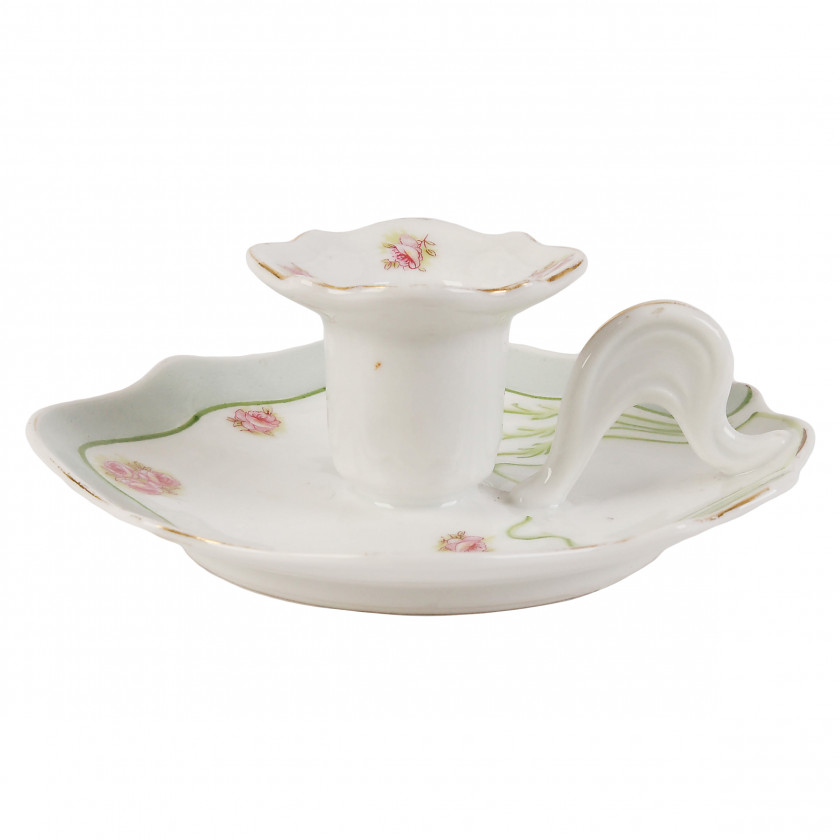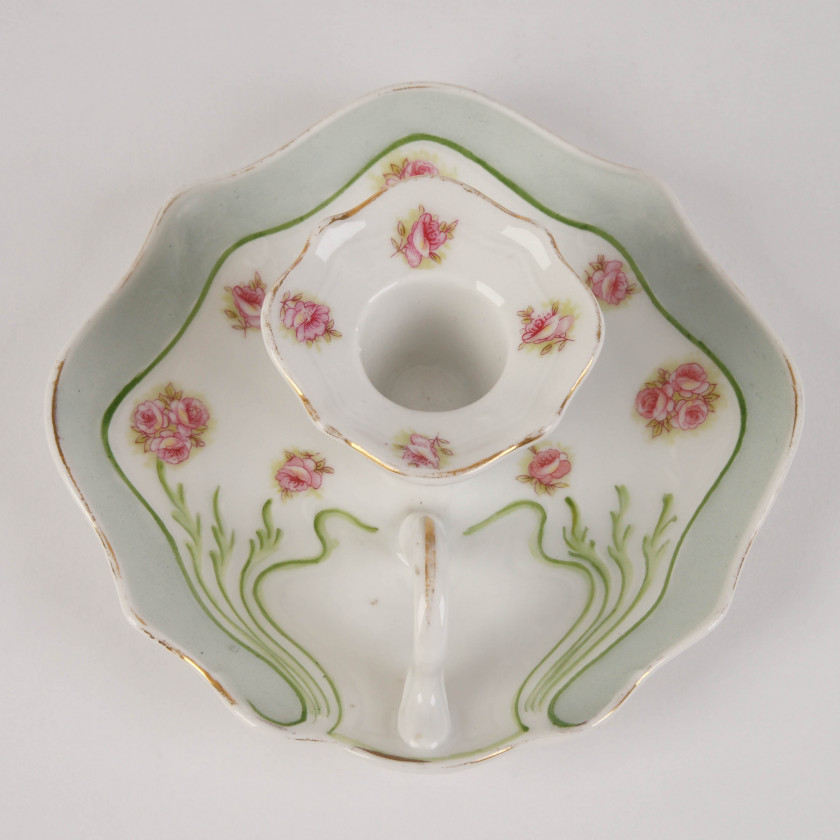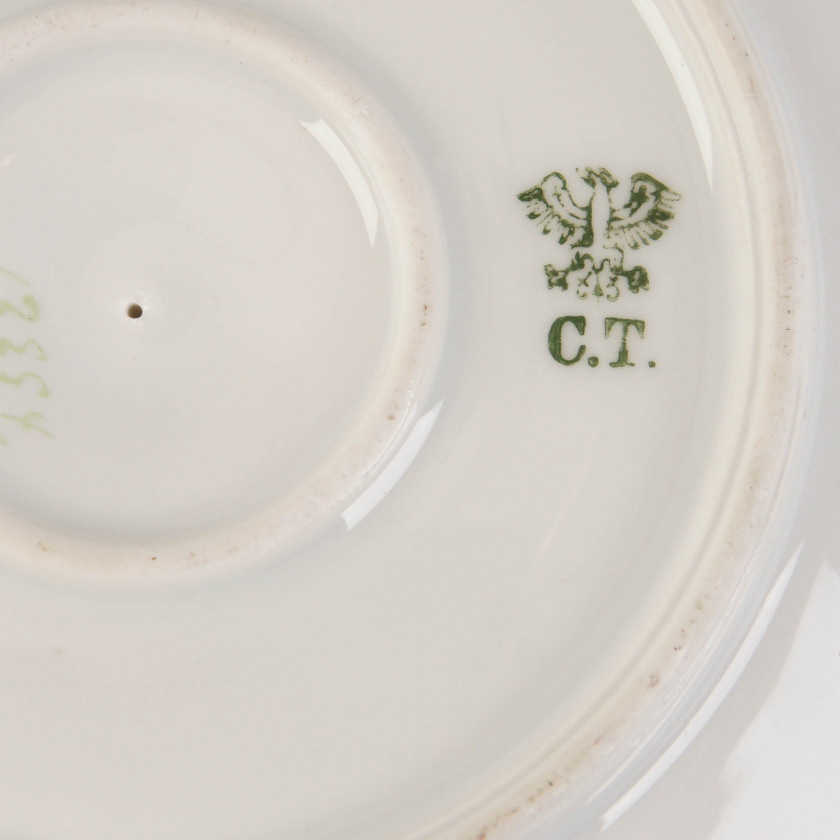Porcelain candlestick for one candle
-
150.00 EUR
Artist/Maker: Porzellanfabrik C. Tielsch & Co.
Artist/Maker Dates: 1845 - present
Place of Production: Germany
Date of Production: 1875 - 1900
Materials: decal, gilding, porcelain, underglaze hand painting
Style: Art Nouveau
Height: 6.0 cm.
Condition:
Description
One reason for the success of Carl Tielsch straight from the beginning was that he had a very large product range, starting with normal household pieces, going over hotel porcelain and ending with luxury goods. In addition, the facility always had the best designers and decorators. At first, Tielsch only marked his products with the initials 'TPM', which stood for Tielsch Porzellan-Manufaktur. As that appeared similar to the 'KPM' used by the Königlich Preußische Porzellanmanufaktur, the two snakes curling around a stave were added at first, only to be replaced completely by the eagle from 1847 onwards.
The first eagle mark was similar to the mark used by the Porzellanmanufaktur F.A. Schumann, a firm located in Berlin-Moabit since 1836. Tielsch was very fond of their products and copied their style for some time. But the depiction of the eagle also caused problems and the director of the KPM factory sent a complaint to the Ministry of Finance. This forced Tielsch to change his mark again in 1850. While the new mark could still be mistaken for the 'KPM eagle', the Ministry decided that it was different enough to please them and further complaints from KPM Berlin were turned down.
In 1882, the member of the Chamber of Commerce (thus entitled to carry the title of 'Kommerzienrat') Carl Tielsch died at the age of 67. Quite a few of his workers and citizens of the town mourned his death as he had been involved in a lot of social work and had introduced the workers and disability pension fund. His son, the businessman and reserve officer Egmont Tielsch was also engaged in social work and had earned himself a very good reputation. He continued the work of his father and was soon able to start planning an additional production location in Altwasser that was then officially opened on January 1st 1906.
This additional location was also a test facility, and later that year the director of the plant Georg Faist together with Fougeron from Montereau (France) and the Vereinigte Chamotte Fabriken ⇒vorm. C. Kulmitz ⇒G.m.b.H. in Saarau successfully completed trials on a technical revolution: they were able to present the first fully functional and effective coal-fired tunnel kiln for porcelain, with an impressive overall length of 64 meters (209.97 ft). Because of his outstanding services for the industry, in combination with his social work, Egmont Tielsch was awarded the Roten Adlerorden IV. Klasse ('Red Eagle Medal 4th class') and raised to peerage.
His new title and name of Ritter und Kommerzienrat Egmont von Tielsch gave the firm another boost in sales, and in 1913 the company reached its peak employee count with 1,500 workers, including 270 potters and 110 decorators. Shortly before the outbreak of the first World War in 1914, the product catalog shoved 1,637 porcelain pieces. One may think that his number is not impressive, but one should keep in mind that a coffee pot was counted as 'one piece' even if it was avalable in 196 variations (including all different sizes and decorations).
The company managed to get through the years of war very well until 1917. The town officials then ruled that Tielsch should reduce his capacity to 60 percent as to preserve resources. And as to make up for the loss in income, he should also think about changing the firm into a corporation, something Egmont had been thinking about anyway.
Shipping details
- Log in to see the cost for shipping this lot to your address.
Shipping methods are determined by item size, type, fragility and specific characteristics.
Shipping costs are calculated based on carrier rates, delivery distance and packing complexity.
Payment details
Doma Antikvariāts accepts the following payment methods:







